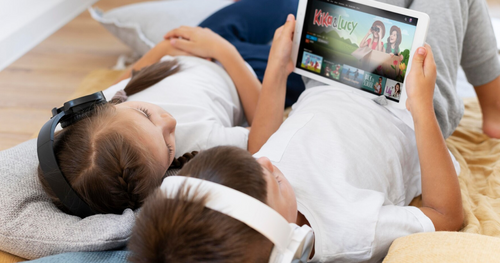ESL or English as a Second Language is not an easy subject for non-native speakers of English. ESL classes may be boring and tedious, which could leave students uninterested and unengaged. However, it’s essential to make the classroom a fun and inspiring place for ESL students. AllRight teachers find that incorporating riddles into their lessons is a great way to add a fun and exciting twist to their teaching methods. In this article, we'll discuss the benefits of using riddles in the ESL classroom, how to create effective riddle activities, and how to overcome the common challenges of using riddles to teach English.
Riddles for Kids: Introducing Fun and Learning in ESL Classroom
What are ESL Riddles and How Do They Benefit Students Learning English?
An riddle is a question or statement that requires a bit of thought and ingenuity to solve. It often has a hidden meaning that must be guessed. ESL riddles are specifically designed for students learning English as a second language. Riddles benefit ESL students by making language learning more engaging and interesting. Because riddles require critical thinking, they help to improve problem-solving skills and promote creative thinking, which are vital skills for learning a new language. Additionally, riddles can help students improve their vocabulary, pronunciation, and descriptive language, which makes them more confident English speakers.
How Can Riddles for Kids with Answers Improve Critical Thinking and Problem-Solving Skills?
Riddles for kids with answers require the application of critical thinking skills to solve the puzzle. By solving riddles, students learn to analyze the question, identify patterns, and think creatively to find a solution. These cognitive skills are highly transferable to other areas of learning, making riddles an effective way to teach critical thinking and problem-solving skills. When students work together to solve riddles, they develop teamwork and communication skills, which are essential in the classroom and beyond.
What Makes Riddles for ESL Students Effective in Learning English Vocabulary?
Riddles for ESL students are effective in learning English vocabulary because they require the students to think about how words are used, how they are spelled, and how they fit together in a sentence. Solving riddles promotes knowledge retention, which means the vocabulary learned through riddles is more likely to stick. Additionally, because riddles often use puns and tricky phrasing, they improve students' understanding of the nuances of the English language. This makes riddles an effective tool for improving comprehension and communication skills.
Teaching ESL with Riddles: Tips and Tricks for English Language Teachers
How to Use Riddles as a Fun and Engaging Warm-up Activity in an ESL Lesson?
One way to use riddles as a warm-up activity is to create a riddle of the day board. Each day, a new riddle can be added to the board for students to solve. This gets students thinking and engaged in the lesson right from the start. Additionally, riddles can be used as a break during a lesson to give students a chance to think and relax.
What Are Some Creative and Effective Ways to Use Riddles for ESL Students?
Another creative way to use riddles is to have students create their riddles. This activity not only promotes creativity but also encourages students to think critically about language use and sentence structure. Additionally, riddles can be used to teach idioms and jokes in English, which can further improve the ESL student's understanding of the language.
What Are Some Common Challenges of Teaching Riddles to ESL Students and How to Overcome Them?
One common challenge of teaching riddles to ESL students is that some riddles may be too difficult for them to understand. To overcome this challenge, it is essential to use riddles that match the student's skill level. Additionally, it may be helpful to provide hints and clues to help students solve the riddle. Finally, it is important to ensure that riddles are not used excessively in the classroom as this can lead to boredom and disinterest.
Riddles for preschoolers
- I have a big, yellow face and I like to shine in the sky during the day. What am I?
Answer: Sun
- I am a fruit that is red and juicy. You can make juice and sauce out of me. What am I?
Answer: Apple
- I am a farm animal that says "moo." I give milk to people. What am I?
Answer: Cow
- I am a tiny insect that can fly. I make honey and live in a hive. What am I?
Answer: Bee
- I am a round fruit that is orange. You can peel me and eat my segments. What am I?
Answer: Orange
- I am a pet that likes to chase its tail and play with a ball of yarn. What am I?
Answer: Cat
- I am a bird that can swim and has a long neck. I honk loudly. What am I?
Answer: Goose
- I am a big, gray animal with a long trunk. I have large ears and tusks. What am I?
Answer: Elephant
- I am a vegetable that grows underground. People make fries out of me. What am I?
Answer: Potato
- I am a flying insect that lights up at night. I like to buzz around. What am I?
Answer: Firefly
Riddles for Starters
- I am tall when I'm young and short when I'm old. What am I?
Answer: Candle
- I have keys, but I don't open locks. I have space, but you can't live in me. What am I?
Answer: Keyboard
- I have a face but no eyes, hands but no arms. What am I?
Answer: Clock
- What has a head, a tail, is brown, and has no legs?
Answer: Penny (or coin)
- I have cities, but no houses. I have mountains, but no trees. I have water, but no fish. What am I?
Answer: Map
- I can be cracked, made, told, and played. What am I?
Answer: Joke
- I am full of holes but can still hold water. What am I?
Answer: Sponge
- The more you take, the more you leave behind. What am I?
Answer: Footsteps
- I speak without a mouth and hear without ears. I have no body but I come alive with the wind. What am I?
Answer: Echo
- I have keys but can't open locks. I have a space but can't store things. I make music but can't play instruments. What am I?
Answer: Piano
Riddles for Movers
- I have a heart that doesn't beat. I have a home but I never sleep. What am I?
Answer: A house
- What has a face, two hands, but no arms or legs?
Answer: A clock
- I am taken from a mine and shut in a wooden case. When I am finally used, I am thrown away. What am I?
Answer: Pencil lead/graphite
- I am full of holes, but I can still hold water. What am I?
Answer: A sponge
- I am an insect. I have four wings, but I cannot fly. What am I?
Answer: Dragonfly
- I have keys but no locks. I have space but no room. You can enter but can't go outside. What am I?
Answer: A keyboard
- I am an animal with a long neck and spots on my body. What am I?
Answer: Giraffe
- What has a face that doesn't frown, a bed but never sleeps, and runs but never walks?
Answer: A river
- I am always in front of you but can never be seen. What am I?
Answer: The future
- I have cities but no houses, forests but no trees, and rivers but no water. What am I?
Answer: A map
Riddles for Flyers
- I speak without a mouth and hear without ears. I have no body but I come alive with the wind. What am I?
Answer: Echo
- The more you take, the more you leave behind. What am I?
Answer: Footsteps
- I am an invention that allows you to see through walls. What am I?
Answer: Window
- I have keys that open no locks, with space that has no room, but you can enter. What am I?
Answer: Keyboard
- I am a box that holds keys to the past but can also unlock your future. What am I?
Answer: Book
- I can fly without wings. I can cry without eyes. Wherever I go, darkness follows me. What am I?
Answer: Cloud
- I can be cracked, made, told, and played. What am I?
Answer: Joke
- I have cities, but no houses. I have mountains, but no trees. I have water, but no fish. What am I?
Answer: Map
- I have a heart that never beats, I have a home but I never sleep. What am I?
Answer: A river
- I am an ancient invention, used by the sun and water. I can be measured but never held. What am I?
Answer: Time
In conclusion, incorporating riddles into ESL classrooms can significantly benefit students learning English as a second language. Riddles engage students, promote critical thinking and problem-solving skills, improve vocabulary and language comprehension, and foster teamwork and communication. By making the learning process fun and inspiring, riddles create an effective and enjoyable environment for ESL students to enhance their English language skills.









